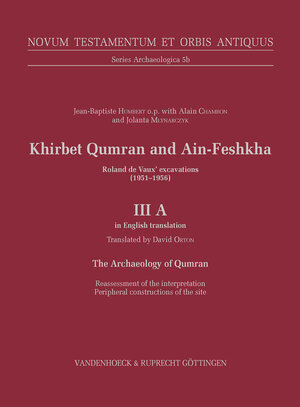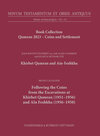Khirbet Qumran and Ain-Feshkha III A (in English translation)
Roland de Vaux' excavations (1951–1956). The Archaeology of Qumran. Reassessment of the interpretation Peripheral constructions of the site
von Jean-Baptiste Humbert, herausgegeben von Jean-Baptiste Humbert, aus dem Französischen übersetzt von David E. OrtonFor 60 years Qumran research has been focused on epigraphy, exegesis, and the historical sources of the Dead Sea Scrolls. The manuscripts are now published and accessible, and research is turning in a positive way to the archaeology of the site and its context. The time has come to provide researchers with a complete documentation. The excavator, Roland de Vaux, had given preliminary reports and a valuable interpretation made in the immediate aftermath of the excavations. Since considerable progress has been made in the archeology of Hellenistic and Roman Palestine, however, Qumran has to be reassessed and the interpretation objectively verified. Volume IIIA presents an up-to-date archaeological reconsideration: a shorter and more precise chronology, in which the earthquake of 31 BC is deleted; the concept of an Essene community is challenged, owing to the lack of a suitable infrastructure; the cemetery itself is connected with a Jewish diaspora scattered around the Dead Sea. Other facilities strengthen the Jewish character of the site, however. The function of Qumran fits better with the rites of a pilgrimage on the occasion of the festivals of Passover and Pentecost. In the second part, the peripheral Essene facilities, expanded around an earlier Hellenistic center, are analyzed and described. The essay seeks to outline their internal consistency and to determine their function. The restoration of a stratigraphy, by cross-checking the excavation archives, leads to a redistribution of pottery in four levels in a more precise chronology. The reconsideration makes use of anthropology, which opens up the archaeological field and throws additional light on the manuscripts.







